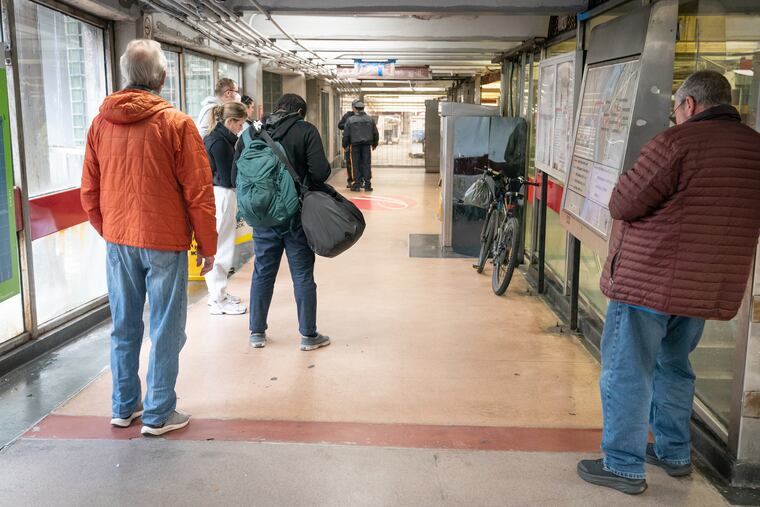44 aftershocks have followed Friday’s earthquake, but they haven’t been damaging
Aftershocks always follow "mainshock" earthquakes, the U.S. Geological Survey says. Of the 44 recorded, 39 have been "microearthquakes."

As the sun was re-emerging from the moon’s shadow on Monday afternoon, an aftershock shook the ground near the epicenter of Friday’s earthquake, and yet another during the early-morning hours of Tuesday. But you probably didn’t feel the earth moving under your feet, nor did anyone else.
They were notable only in that they were aftershocks No. 43 and 44, by the U.S. Geological Survey’s count.
They both registered a mere 1.3 on the “moment magnitude” scale. In fact, of the 44 post-quake tremors, only five registered as a 2 or better. The 39 others have been what USGS calls “microearthquakes.”
The biggest of the aftershocks was a 3.8 around 6 p.m. Friday, which was felt in and around Philadelphia.
» READ MORE: An earthquake and aftershocks rock the Philly region
All the aftershocks have been centered near the epicenter of the 4.8 “mainshock” quake, at Whitehouse Station in Hunterdon County in north-central New Jersey, which occurred at 10:23 a.m. Friday.
“The aftershocks are expected, and nothing out of the ordinary,” said Alexandra Hatem, USGS research geologist at the Geologic Hazards Science Center, in Golden, Colo.
Monday’s was measured at 3:43 p.m. — about 20 minutes after the sun was 90% covered in shadow over Philly — and, no, it had nothing to do with the eclipse. Another was detected at 2:51 a.m. Tuesday.
The moment magnitude system, which is similar to the Richter scale, is logarithmic, meaning that each number of the scale represents a 10-fold increase in the ground motion detected by a seismograph. A magnitude 5 quake would be 10 times as potent as a 4.
Aftershocks, which are “minor readjustments” along a fault line, always follow a mainshock, the USGS says. They can continue for weeks and even months.
» READ MORE: A visual guide to the earthquake felt in the Philly region
The epicenter of Friday’s quake was believed to have been along an “inactive” fault line, according to the USGS.
No injuries or structural damage was reported, but the tremors sent ripples of fright in Philadelphia and New York and from Maryland to New England.
The USGS said it received more than 160,000 reports of tremors, which it said was a record.